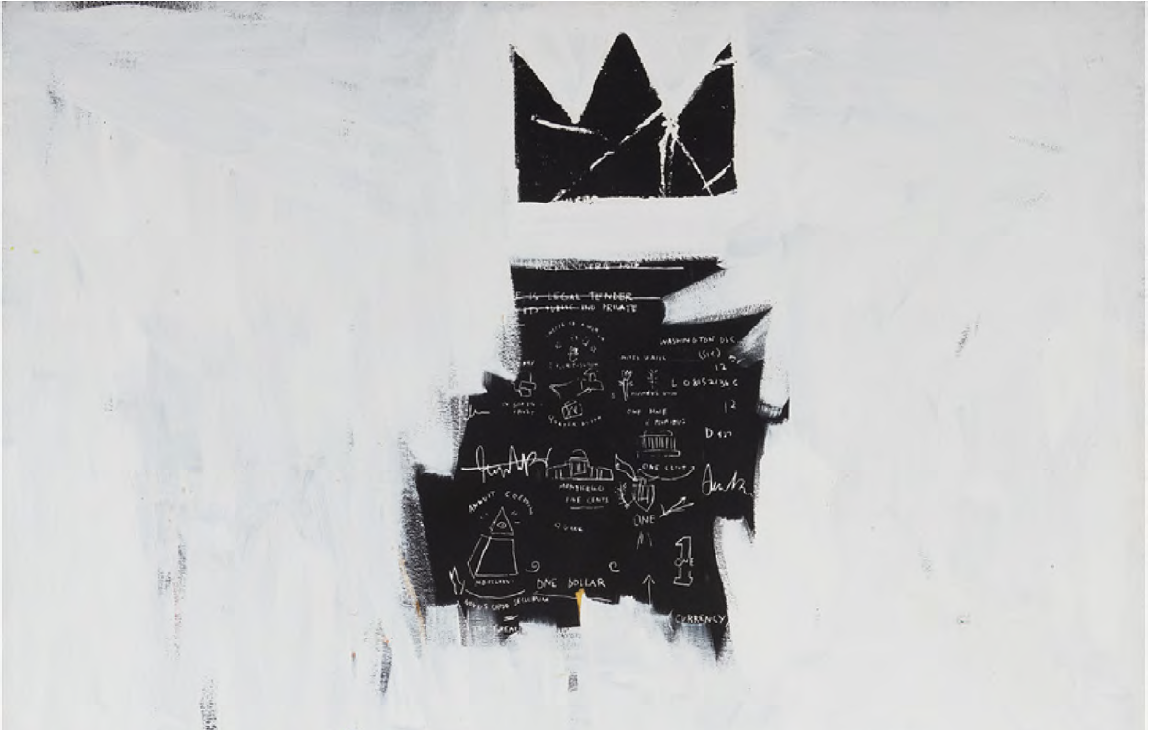Overview
King Pleasure: Tuxedo
In the early 1980s, Basquiat began taking his drawings to a silkscreen studio, where they were transferred onto screens and printed onto canvas. When Basquiat first presented these images to galleries, the reaction was not as he hoped. One art dealer rejected a silkscreen that Basquiat submitted for an important show because it was not a painting. And one of his biggest collectors, who had planned to purchase one of the works, changed his mind when he learned that the work was one of an edition of ten. Most collectors prefer a unique piece, rather than a print, as it is considered more valuable.
In response, Basquiat took the work back to his studio. With the silkscreened image as his base, he painted, drew, and added more silkscreened images to create a complex surface of images and brushwork. He used this process to create Tuxedo.
In Tuxedo, Basquiat reversed his original artwork from black images and text on a white background to white images and text on a black background. This was achieved photographically, turning the original artwork into one large silkscreen print. The following quote is by Fred Hoffman, an artist who assisted Basquiat with his silk-screening process:
“His decision to turn everything black in the work into white and everything white into black was not merely a look he desired to achieve. Basquiat’s aesthetic decisions were his means of questioning certain social and cultural assumptions, with identity most important among them.”
The paintings from this series relate to the surfaces Basquiat encountered on the streets of New York City: walls layered with graffiti, posters, paint, and grime. They also relate to works by Cubist artists such as Picasso, Braque, and Gris, who incorporated everyday found materials into their collages.
Samples from this Curriculum
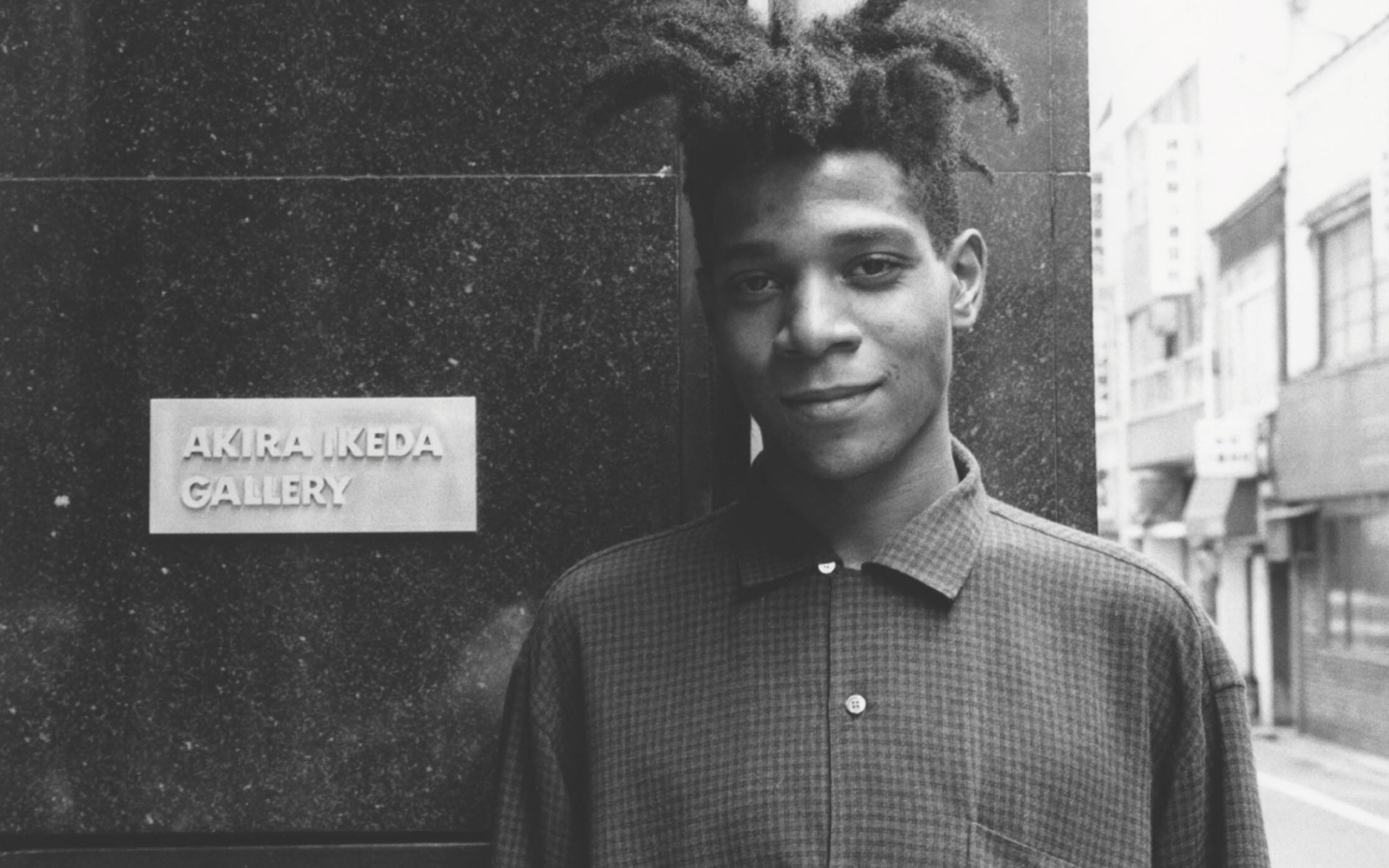
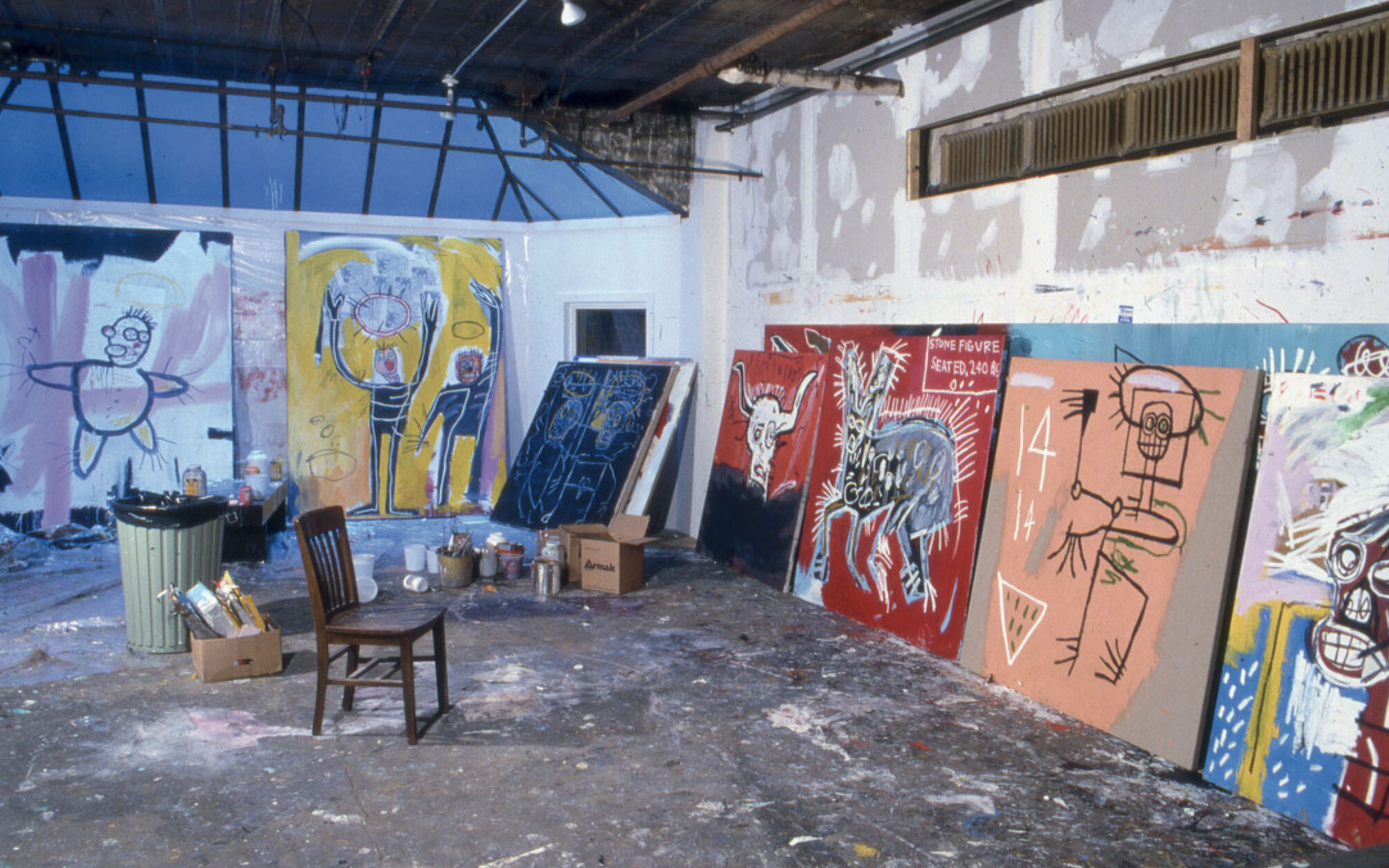
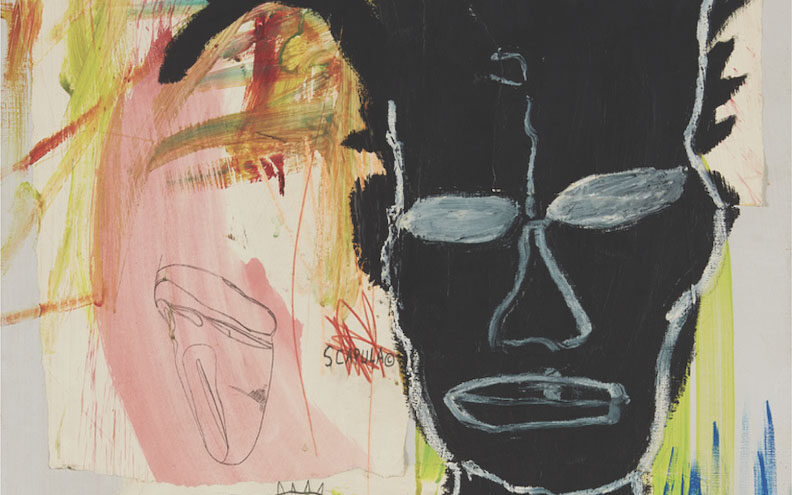
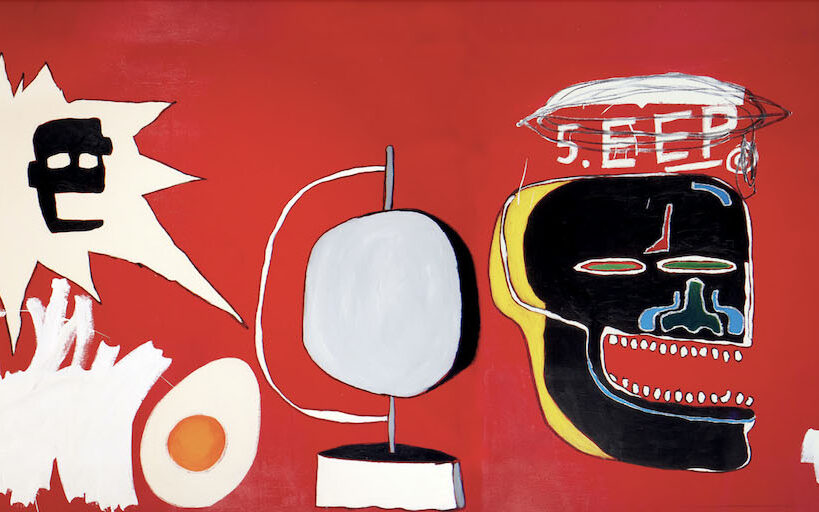
Materials and Tools
- Paper (at least two sheets)
- Drawing materials (any)
- Glue
- Access to a copy machine
- Tempera or acrylic paint or oil pastels
- Scissors (optional)
Activities
Step 1: Questions for Looking
- Look closely at this artwork, starting from the bottom.
- Note: students can look together in pairs or small groups. They can be assigned a part of the painting—lower, middle, or upper—to look at closely and report out to the whole group.
- What do you notice about the lower part of this painting? What do you notice in the center of the painting?
- What do you notice about the top of the painting?
- What do you notice about the colors in this painting?
- How would you describe the lines and shapes in the painting?
- What words and phrases stand out to you? What do they make you think of?
- What images stand out to you? Why?
- How do you think Basquiat began this work? What do you think he did last? What evidence can you find of his process? Note: Share information about his process from the About the Artwork section.
- The title of this work is Tuxedo. What associations do you have with the word tuxedo? Have you ever worn a tuxedo or seen someone wear one? What color was it? Why do you think Basquiat titled this artwork Tuxedo?
- Basquiat made the decision to reverse his drawings from black words written on a white background to white words written on a black background. What possible meanings can you make from this choice?
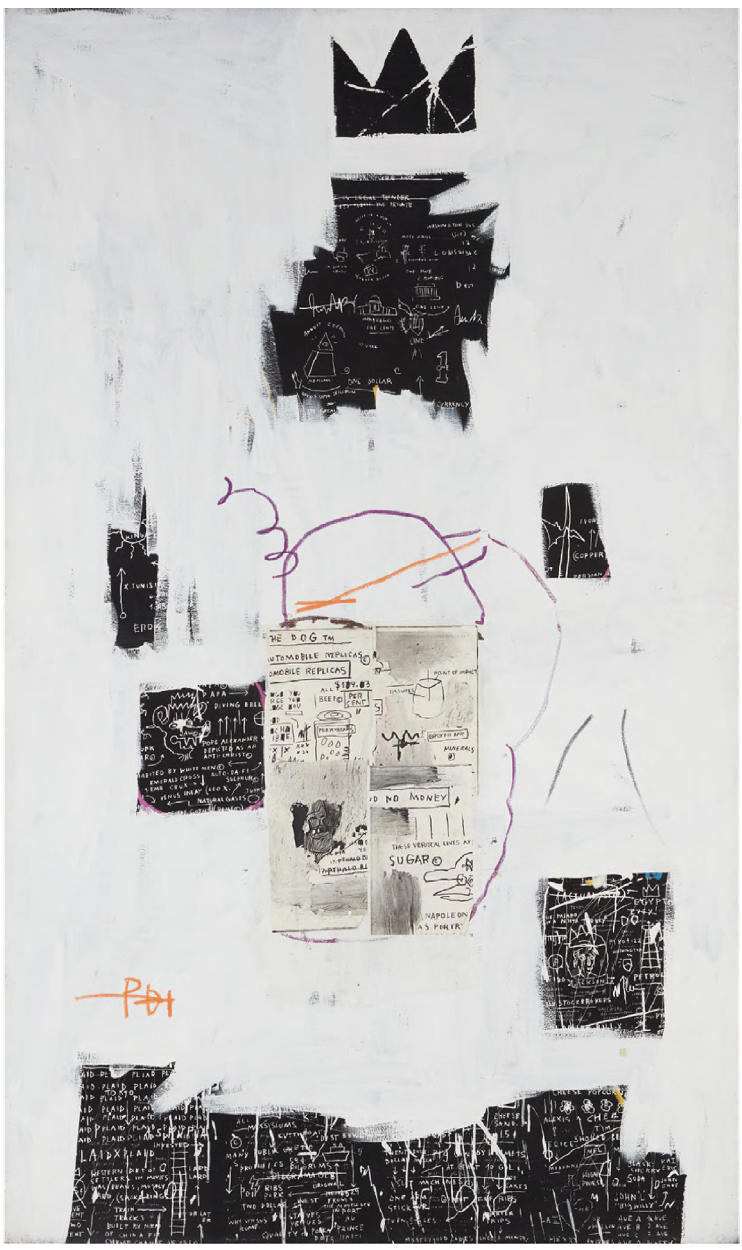
Step 2: Experiment with Mixed Media and Process
To create Tuxedo, Basquiat used several different materials and techniques.
- Create a drawing
- Make photocopies of your drawing
- Create a collage by cutting, tearing, arranging, and
gluing pieces of your photocopied drawings to a
background paper - Add to your collage with color and line. Play with
layering and repetition
When your work is complete, spend a moment looking at
your finished piece.
- How did it change from the original drawing to the completed work?
- What did you enjoy about that process?
Vocabulary
Motif: a recurring image, theme, or pattern that appears in
a work of art.
Silkscreen: a printing technique where a mesh is used
to transfer ink onto a surface, except in areas made
impermeable to the ink by a blocking stencil. A blade or
squeegee is moved across the screen to fill the open mesh
spaces with ink. One color is printed at a time, so several
screens can be used to produce a multi-colored image.
Visual Rhythm: a principle of design that suggests movement or action. Rhythm is usually achieved through repetition of lines, shapes, and colors. It creates a visual tempo in artworks and provides a path for the viewer’s eye to follow.
Resources
Jean-Michel Basquiat: King Pleasure
Exhibition website: kingpleasure.basquiat.com
Basquiat (2005). Brooklyn Museum of Art
brooklynmuseum.org/opencollection/exhibitions/614
Web page from the Brooklyn Museum’s Basquiat retrospective in 2005; includes an in-depth analysis of Basquiat’s work and life
Basquiat: The Unknown Notebooks. Brooklyn Museum of Art
Teacher resource from the exhibition, Basquiat: The Unknown Notebooks, at the Brooklyn Museum brooklynmuseum.org/search
Books
Radiant Child: The Story of Young Artist Jean-Michel Basquiat, Javaka Steptoe. New York: Little, Brown Books for Young Readers, 2016.
Life Doesn’t Frighten Me, Maya Angelou
Poems by Maya Angelou, paintings by Jean-Michel Basquiat.
Edited by Sara Jane Boyers. New York: Stewart, Tabori & Chang, 1993.
Jean-Michel Basquiat, Essays by Dick Hebdige, Klaus Kertess, Rene Ricard, Greg Tate, and Robert Farris Tompson. Biographical Chronology by Franklin Sirmans.
New York: Whitney Museum of American Art, 1992.
Films
Basquiat: Rage To Riches – BBC Studios
https://www.pbs.org/wnet/americanmasters/basquiat-rage-riches-documentary/10456/
Basquiat: Rage To Riches is a BBC Studios Documentary
Unit production for BBC Two and PBS in association with
Thirteen Productions that aired in October 2017, produced and directed by David Shulman with Executive Producer Janet Lee. It won the BAFTA Television Award for Best Specialist Factual program.
The Radiant Child – Trailer
youtube.com/watch?v=9Om2d2CxaQw
A documentary about Basquiat’s life and the 1980s New York
art scene. Directed by Tamra Davis. Written by Eric Martin
and Lois Vossen. 88 minutes. Released 2010
Credits
All works ©The Estate of Jean-Michel Basquiat, Licensed by Artestar, New York
KingPleasure.Basquiat.com
Copyright © 2023 Studio in a School NYC LLC

